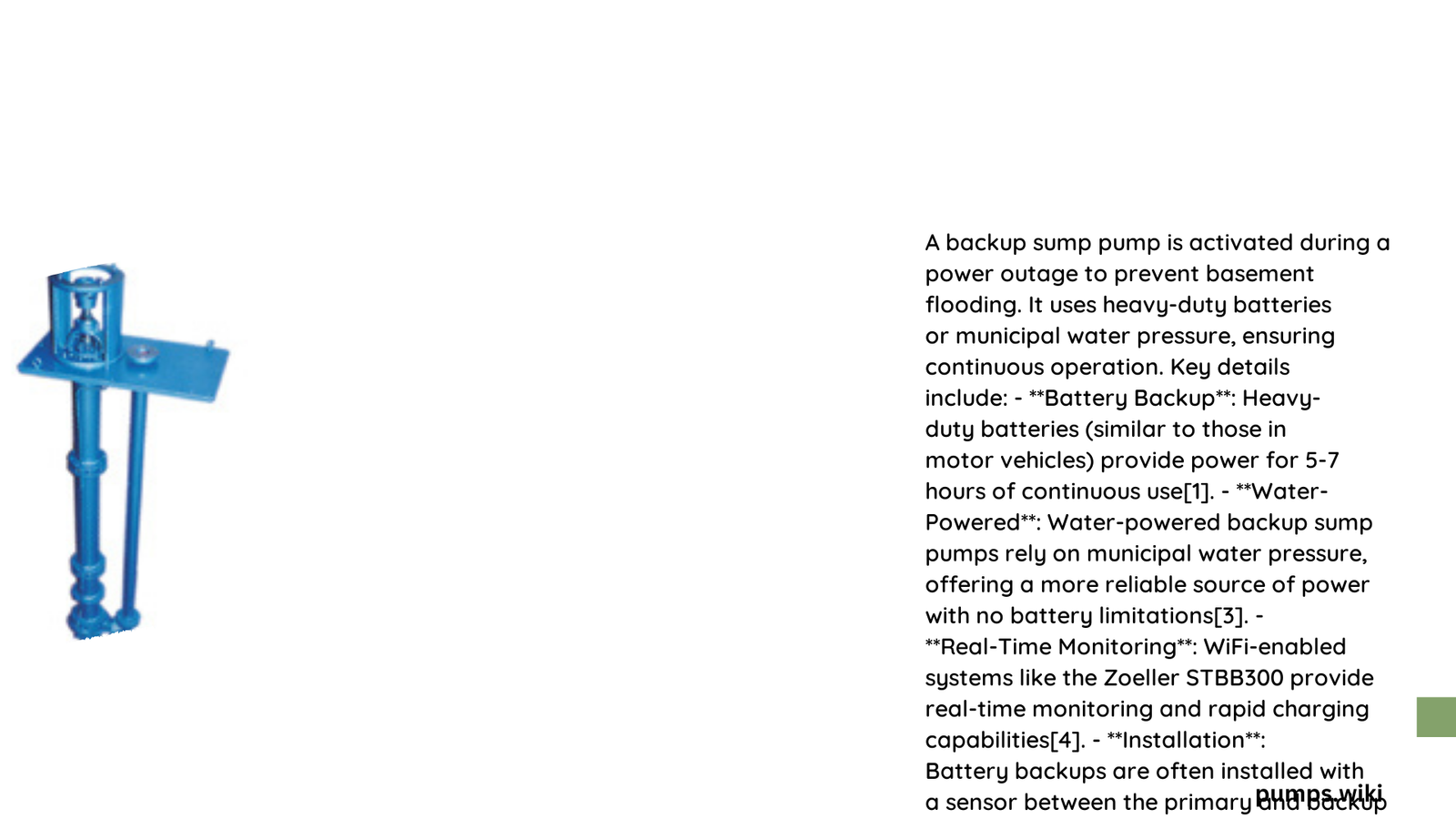A backup sump pump is a critical component of a home’s flood protection system. It activates automatically when the primary pump fails or during power outages, ensuring continuous water removal from the sump pit. This article explores the activation process, performance metrics, and troubleshooting tips for backup sump pumps, providing homeowners with essential knowledge to maintain their basement’s dryness and structural integrity.
What Triggers a Back Up Sump Pump?
Backup sump pumps are designed to activate under specific conditions:
- Power Outages: When the main power supply fails, cutting off electricity to the primary pump.
- Primary Pump Failure: If the main sump pump malfunctions due to mechanical issues or wear and tear.
- Excessive Water Inflow: During heavy rainfall or flooding events that overwhelm the primary pump’s capacity.
The activation process typically involves a float switch that rises with the water level, triggering the backup pump to start operating.
How Does the Activation Process Work?

The activation of a backup sump pump follows a straightforward process:
- Float Switch Detection: As water levels rise in the sump pit, the float switch elevates.
- Trigger Point: Once the water reaches a predetermined height, the float switch activates the pump.
- Power Source Engagement: The backup power source (usually a battery) supplies electricity to the pump.
- Pump Operation: The backup pump begins removing water from the pit.
- Automatic Deactivation: When water levels decrease sufficiently, the float switch lowers, turning off the pump.
This automated process ensures continuous protection against flooding, even when the primary system is compromised.
What Performance Can You Expect from a Back Up Sump Pump?
Backup sump pumps vary in their capabilities, but generally offer robust performance:
| Metric | Typical Range |
|---|---|
| Flow Rate | 20-40 gallons per minute (GPM) |
| Horsepower | 0.3-0.5 HP |
| Run Time | 6-12 hours (battery-dependent) |
Factors influencing performance include:
- Battery capacity
- Pump efficiency
- Sump pit size
- Water inflow rate
For optimal protection, choose a backup pump that matches or exceeds your primary pump’s capacity.
How to Troubleshoot Common Activation Issues?
When a backup sump pump fails to activate, consider these troubleshooting steps:
- Check Power Source:
- Ensure the battery is charged and properly connected.
-
Inspect wiring for damage or loose connections.
-
Examine Float Switch:
- Verify the switch moves freely without obstructions.
-
Clean any debris that might impede movement.
-
Test Pump Manually:
- Pour water into the sump pit to trigger activation.
-
Listen for the pump motor and observe water discharge.
-
Inspect Check Valve:
-
Ensure the valve is not stuck or faulty, preventing water flow.
-
Review Installation:
- Confirm the pump is correctly positioned and securely mounted.
If these steps don’t resolve the issue, consult a professional plumber for further diagnosis and repair.
What Maintenance Ensures Reliable Activation?
Regular maintenance is crucial for dependable backup sump pump activation:
- Monthly Tests: Conduct activation tests by filling the sump pit with water.
- Quarterly Cleaning: Remove debris from the pit and check the pump inlet for blockages.
- Bi-Annual Battery Check: Test the battery’s charge and replace if necessary (typically every 2-5 years).
- Annual Professional Inspection: Have a plumber perform a comprehensive system check.
Adhering to this maintenance schedule significantly reduces the risk of pump failure during critical moments.
How to Choose the Right Back Up Sump Pump?
Selecting an appropriate backup sump pump involves considering several factors:
- Capacity: Match or exceed the primary pump’s flow rate.
- Power Source: Choose between battery-powered or water-powered backup systems.
- Alarm Features: Opt for models with built-in alarms to alert you of activation.
- Quality: Invest in reputable brands known for reliability and durability.
- Installation Compatibility: Ensure the backup system integrates well with your existing setup.
Consult with a plumbing professional to determine the best option for your specific needs and home configuration.
By understanding the activation process, performance expectations, and maintenance requirements of backup sump pumps, homeowners can ensure their basements remain dry and protected during power outages and primary pump failures. Regular attention to your backup system will provide peace of mind and safeguard your home against potential water damage.
